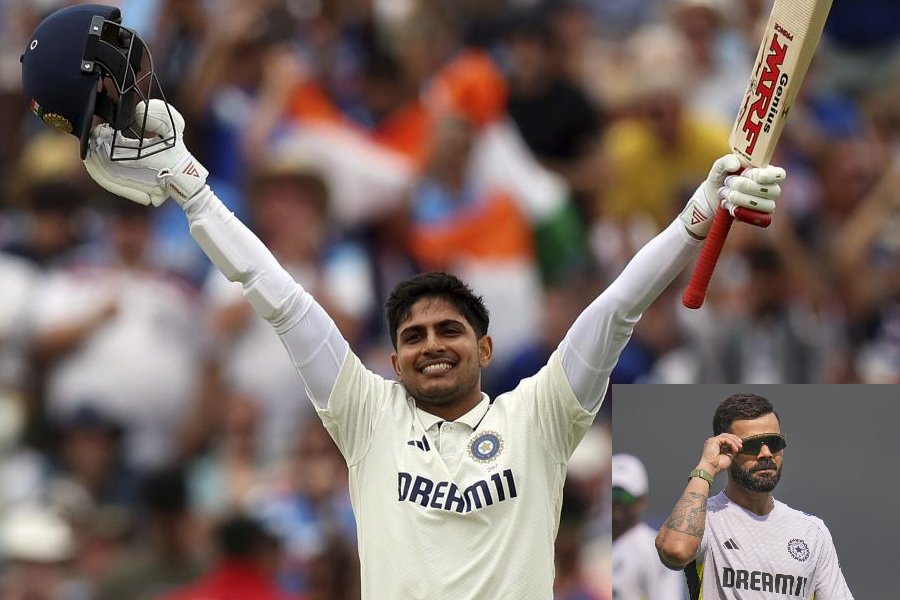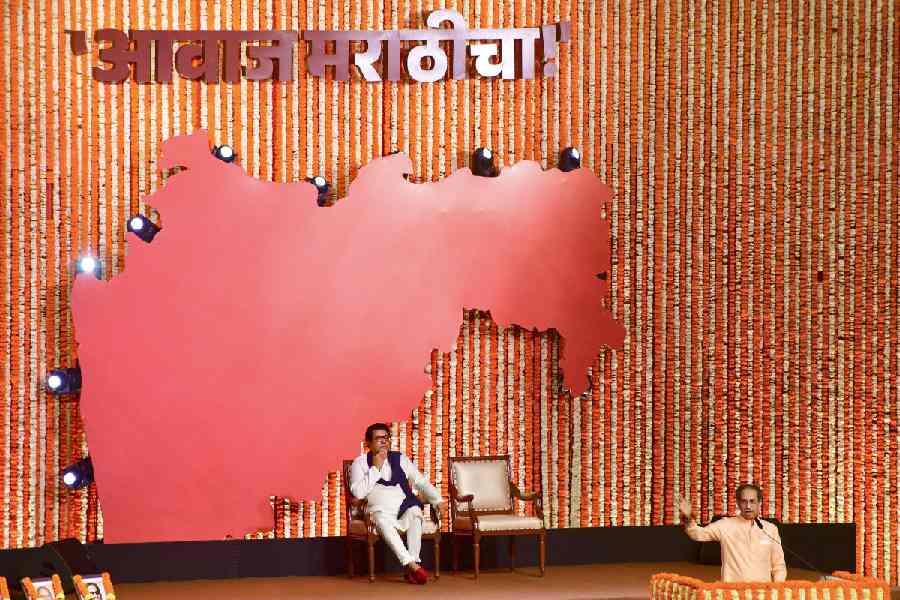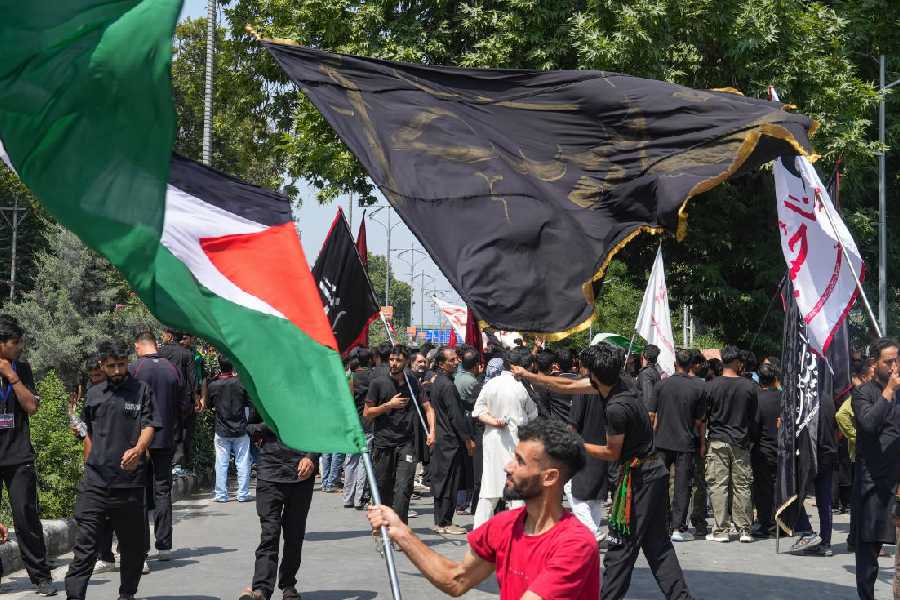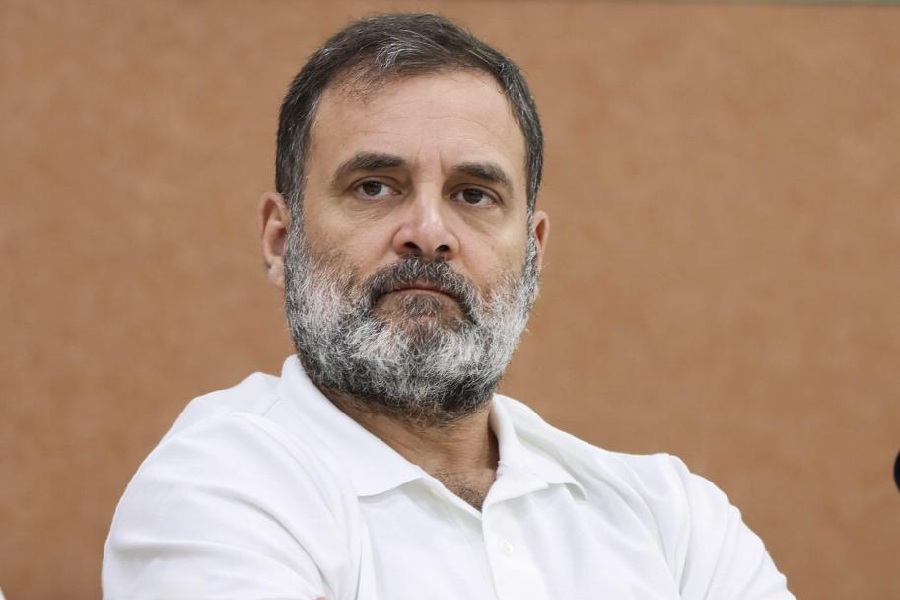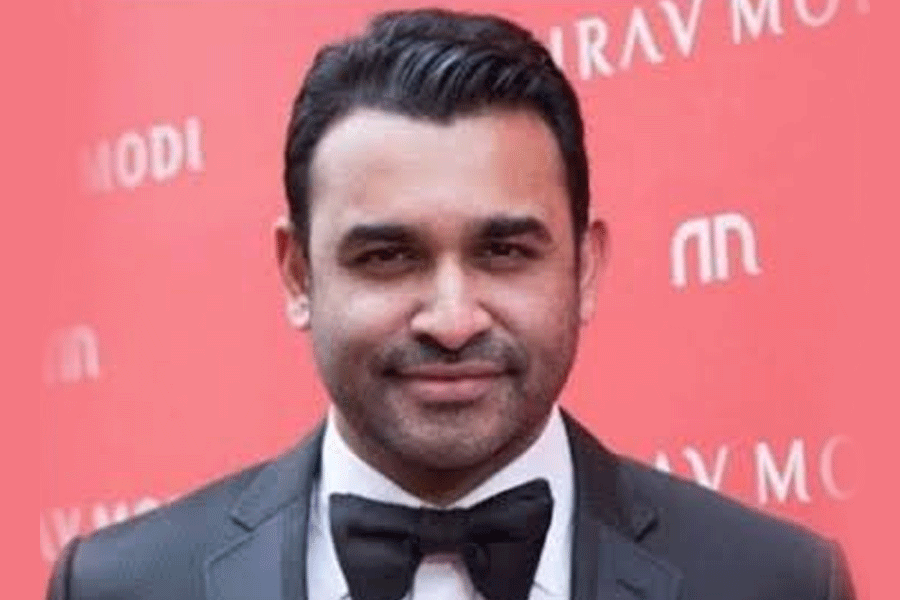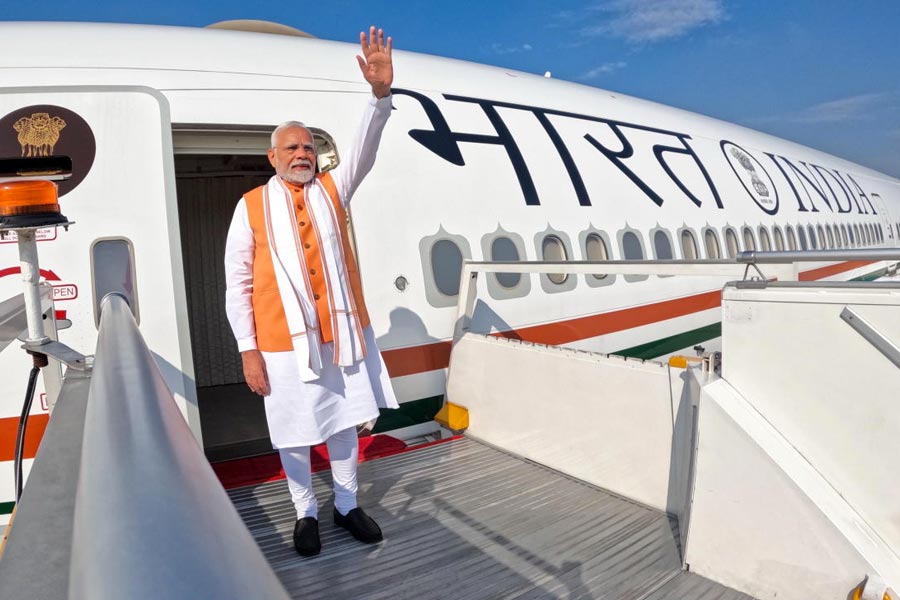 |
 |
| (Top) Kalighat Kali temple; (Above) Kali image in the sanctum sanctorum. Picture by Rajib Basu and file picture |
In Kalighat as in Bengal, 13 festivals are organised in 12 months of the year. Although it is a Shakti pith and a Maha pith as well sanctified by the fall of the toes of Sati, one of the 10 manifestations of the goddess, strangely, many Vaishnavite rites are followed here.
Kali wears a Vaishnavite tilak on her forehead and nose. Although there are no rational explanations for such peculiarities, there is, however, an adage which stresses that the lores surrounding Kalighat are just that — lores based on surmises, conjectures — “Kalighater katha/Age beroy hath paa/pore beroy matha.” So Kalighat stories are not to be taken literally.
In keeping with Vaishnavite traditions, Ramnavami Dol is celebrated here with much fervour around the months of Chaitra-Boishakh. But to that later. What is more remarkable is that on Kali puja day, the goddess is not worshipped as Kali but as Mahalakshmi. Of course, in West Bengal’s “ghoti” families (as opposed to the “bangals” across the Padma river) Lakshmi is worshipped on the night of Dipanwita Kali puja.
Santipada Bhattacharya, chief ritual and scriptural adviser and head priest, Kalighat Kali temple, has an explanation, albeit based on conjectures. The 81-year-old Bhattacharya, goes back to the early days of this sanctified triangular precinct where Kali was once worshipped by fearsome Kapaliks in the dense jungle that covered this region.
Bhabanidas Chakrabarty was the first grihi or domesticated sevayat of the goddess. Before him, the priests titled Giri, Puri and belonged to the Dasnami community and were generally known as Mahant. In the days of Man Singh, one worshipper called Bhuban Brahmachari had a Bhairabi named Jogmaya, who bore him a girl child named Uma. When the girl came of age, Bhuban was anxious to get her married off. It was difficult to find a match for her because in those days, all marital matters were guided by the rigid rules of the koulinya system, and the Bhairabi was of uncertain origin. Kulin Brahmin boys, irrespective of age, were much in demand in the marriage market because of their pedigree.
At that time, Bhabanidas of Jessore had left his hometown in search of his father Prithvidhar, who had disappeared without trace. Bhabani was a Brahmin of Kashyap gotra. Bhabanidas went around the pilgrimage centres selling conch shell bangles to earn a living. Bhuban asked Bhabanidas to marry his daughter Uma for which he was willing to gift him the entire 395 bighas covering Kalighat. The descendants of Uma and Bhabanidas are the grihi sevayets of the Kalighat Kali temple.
Bhabanidas’s family deity was Basudeb who was installed in a niche in the west wall of the main temple of Kali. The deity is still there. Santipada Bhattacharya says Bhabanidas was perhaps a Vaishnav. To make sure that his descendants did not worship Kali he drew a Vaishnav tilak on the goddess’s image.
Durga puja may be celebrated in Kalighat but only those involved in the actual worship are handed out gifts. However in the months of Chaitra-Baishakh, when Ramnavami Dolyatra is celebrated in Kalighat, the images of Krishna and Radha are taken out in a procession decked out with flowers. Fireworks are burnt and everybody receives gifts. Later, Krishna and Radha and Kali are worshipped together.
On Janmasthami day, Kali is worshipped as the mother of Krishna. On his birthday the Basudeb image is placed near the Kali image, mother and child fashion.
Kalighat Kali receives daily puja. But on Dipanwita Kali puja day, she is worshipped as Mahalakshmi. The new moon drives away darkness and ushers in hope and prosperity.


